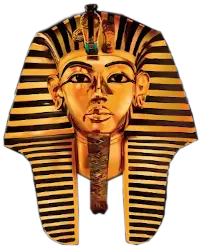
Aristotle's school and pupils from Athens to this great Egyptian Library, and therefore the students who studied there received instructions from Egyptian priests and teachers, until they died out. The difficulty of language and interpretation made it imperative for the Greeks to use Egyptian teachers.
The Greeks did not carry culture and learning to Egypt, but found it already there, and wisely settled in that country, in order to absorb as much as possible of its culture.
B. The Royal Library of Thebes: The Menephtheion is described. It was also looted by invading armies.
But when we read a brief sketch of the magnificence of the Theban Royal Library; The Menephtheion, we even see a better picture and are bound to admit that Egypt was the store house of ancient culture and that that culture was preserved in the form of literature stored away in her great libraries and temples. Great as the Royal Library of Alexandria might have been, we see in the Theban Royal Library something far more magnificent and far more representative of the true greatness of our Ancient Egypt.
On the left of the steps leading to the second court, there is still seen the pedestal of the enormous granite statue of Rameses; the largest, that ever existed in Egypt, according to Diodorus. Its height has been calculated at fifty-four feet, and its weight, at 887 1/4 tons; a marvel to the modern mind. The interior face of the wall of the pylon represents the wars of Rameses III. The Osiride pillars of the second court, are the monolithal figures, sixteen cubits in height, supplying the place of columns, and at the foot of the steps leading from the court to the next hall beyond, there were two sitting statues of the King. The head of one of these was of red granite, known by the name of "Young Memon", was taken away by Belzoni, and is now a principal ornament of the British Museum.
Beyond this are the remains of a hall 133 feet broad by 100 feet long, supported by 48 columns, twelve of which are
Topics
Greek Philospohy is Stolen Egyptian Philosophy
The Memphite Theology is the Basis of all Important Doctrines of Greek Philosophy
Greek Philosophy was Alien to the Greeks
Greek Philosophy was the offspring of the Egyptian Mystery System
The Egyptians Educated the Greeks
The Curriculum of the Egyptian Mystery System
The Pre-Socratic Philosophers and the teaching Ascribed to them
The Athenian Philosophers
1. Socrates
2. Plato
3. Aristotle